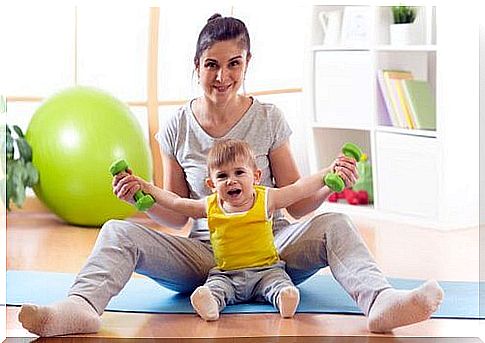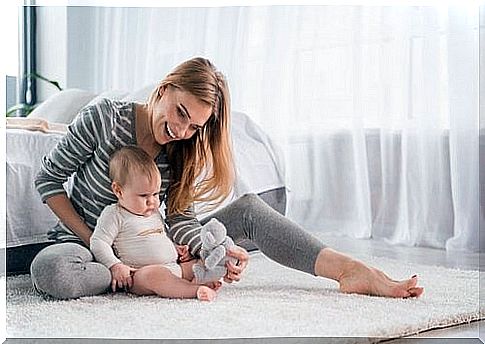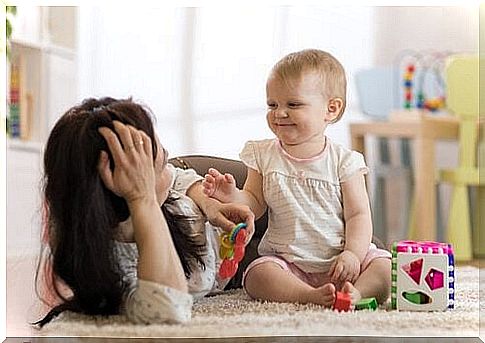Learning To Sit Down – The Experience Of Children And Parents

As parents, we look forward to seeing our children accomplish their first feats. We are waiting for the first smile, the first crawling, the first steps. Although everything should happen gradually, we are impatient.
We want to see it sitting by itself, and fast. It happens to all of us. That is why learning how to sit down seems so important to us.
Is it time for your baby to start sitting on its own? As you watch your baby, you’ll see signs that will tell you if it’s ready. And whether learning to sit down brings any risk to your back.
The most important thing you need to know is not to force a correct position. The child will come to her.
You need to give your child the opportunity to spend as much time as possible at home, in comfortable clothes and in a space that allows him to explore and exercise his body. Once he has reached certain stages of development, learning to sit should be easy for him.
How can you tell if your baby is ready to sit?
It is a mistake to push your baby’s rhythm at any stage of learning and development. Every child is unique, and you should not stick to a calendar that lists certain activities at certain times. Some babies take longer, others will get it faster.

As with teething, where some babies grow their first teeth after 3 months and others after 8 months, learning to sit down also does not have a rigid calendar.
We have to wait until the toddler reaches the necessary maturity. Some babies will start to sit up after 6 months, while others will be able to do so after a year.
Learning to sit down… big moment
Therefore , you don’t have to teach your child to sit down before he is ready for it, which is before his own muscles allow him to do so. When your toddler is able to sit up, it gives him a greater ability to manipulate toys and objects that grab his attention.
The sitting position gives the child a different perspective of the environment in which he or she moves. In this position, he is exposed to new stimuli that stimulate his intelligence and curiosity for new challenges. His senses of sensory cognition are awakened. This is the moment when he wants to touch everything.
Exercises that help you learn to sit down
Are you wondering how you can teach your baby to sit? To your child has learned to sit, you can help strengthen your muscles using some exercises. You won’t speed up the process, but this way it will be easier for your little one to achieve the goal.
Learning to sit down is a time you can share and enjoy with your baby, and doing these exercises will be a great opportunity to do so. It gives you the opportunity to participate in the process and contribute, step by step, to your baby’s wonderful development.
However, before you begin exercising to make it easier to learn to sit up, your child will need to reach other important milestones in psychomotor development. This includes, for example, keeping your head in a raised position and trying to sit up spontaneously every time you take your hands.
Let’s do some exercises with the baby
To do these stimulating exercises with your little one, lay a blanket on the floor and get ready to go. We will strengthen the toddler’s abdominal muscles, spine and muscles of the back, neck and shoulders! It is important that you have his favorite toys nearby.

- Put the baby on his back. Sit down in front of him and take their hands. Slowly pick it up until it sits down, then put it back on the blanket. Repeat this movement three or four times.
- Sitting on the floor, put the baby down and support him by the hips. Leave it there for a few seconds and then lay it down so it can rest. Repeat the exercise three or four times so that the child does not get tired.
- Place your baby between your lap, so that it rests on you. Play with him clapping or any other traditional game, such as rocking him rhythmically to a song. At certain times, let it take its back from you and sit on its own for a while. You can help him by supporting his arms when he is not leaning against you.
- Put the baby on his back. Put an eye-catching toy on his tummy that will tempt them to grab her. Your baby will try to slowly get up to reach the toys.
- It is also recommended to play games in which the child is lying on his back and the parent tilts him gently to the right and left.
Never overwhelm your child
If you notice that your child is losing interest in what he or she is doing, discontinue the exercise session. As with all advancements, learning how to sit down has a secret. The idea is to stimulate your baby, but never force him or her.
Avoid getting tired. Enjoy the moment you play together and keep trying. Soon she will be ready for her first seated photo!









